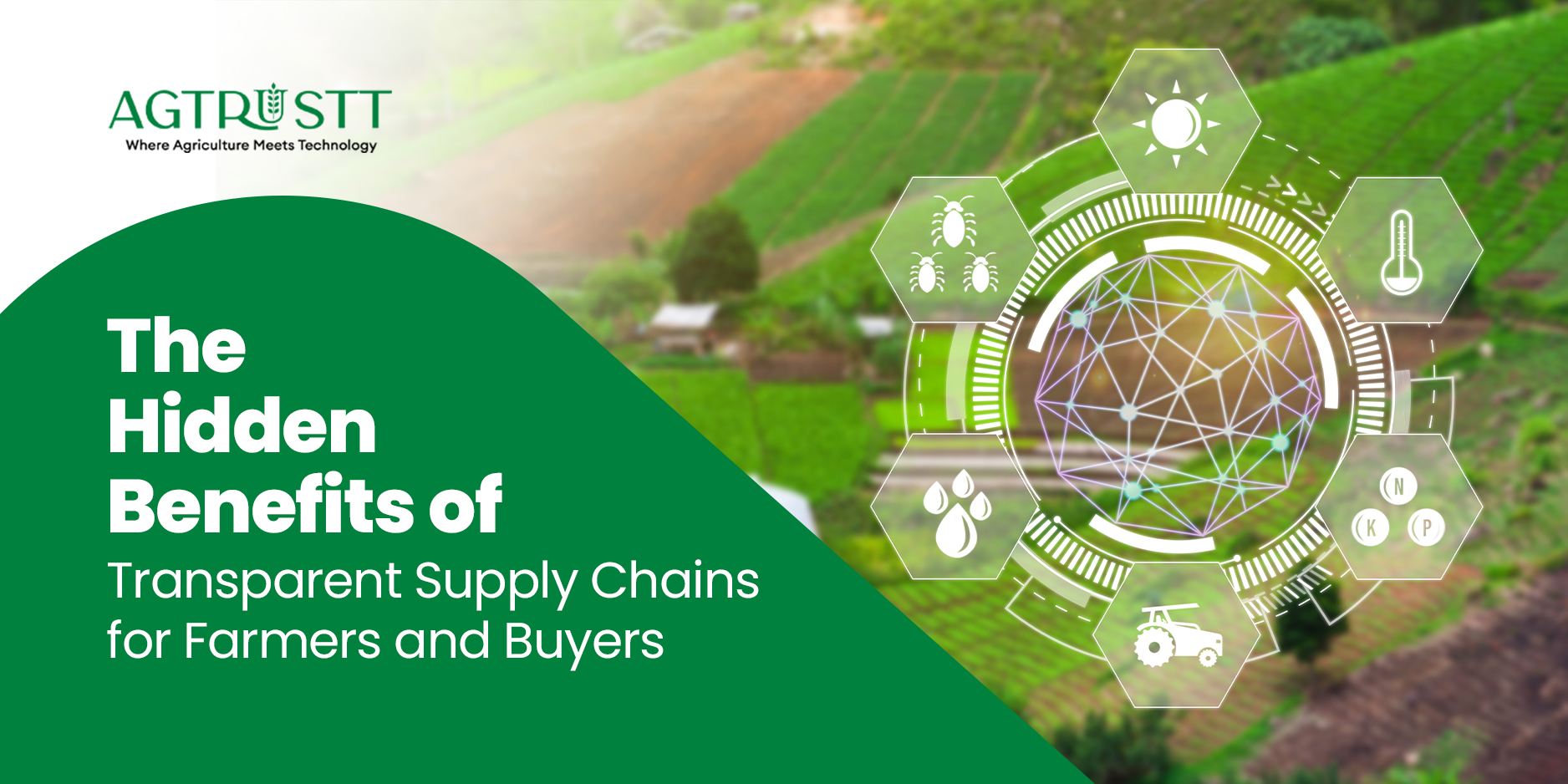Agriculture is one of the industries that support livelihoods globally, but agriculture experiences a huge loss in procurement, storage, processing, and distribution. Unproductive behaviours, lack of transparency, and bad tracking will normally result in waste and financial losses. The agricultural value chain is resilient as more sophisticated technologies are being adopted. From digital procurement to smart warehousing, supply chain technology is changing how losses are rectified and avoided throughout the farm-to-factory process.
Supply Chain Transparency for Trust
Supply chain and management transparency is a system where all processes involved, including sourcing raw materials and delivery of finished products, are transparent and accountable. Stakeholders can build more trust by posting fact-based disclosures about the quality of products, as well as labor and sustainability. Transparency driven by technology not only minimizes losses due to disputes and recalls but also convinces the customers and partners that farming is ethical, safe, and sustainable.
How Does Visibility Reduce Losses?
Unlike transparency, which involves letting the external world know what goes on, visibility improves the performance within the company. Agricultural supply chain transparency technologies enable the stakeholders to monitor daily production processes, quality control, and sourcing of raw materials. With everyone on the same platform, inefficiencies are minimized, mistakes are fixed immediately, and compliance can be handled with ease. This in-house visibility will help in smooth processes, reducing wastage and mismanagement along the chain of supply.
Smart Inventory and Warehouse Management
When there are spoiling or delays due to inefficient warehouse management, there is a peak in losses. This can be prevented by the use of modern supply chain and warehouse intelligence, which assists in:
AI-powered stacking and space optimization
Full lifecycle traceability- Barcode tracking.
Logistics: to simplify the booking system.
Why is Real-Time Marketplace Integration so important?
The absence of information makes markets unstable, and farmers must suffer, and traders become overstocked. B2B marketplaces can provide real-time price discovery, direct matching of buyers and sellers, and demand forecasting. Agricultural supply chain transparency platforms save money by skipping intermediaries and enable the decision-making process to become data-driven. The farmers receive good prices and traders do not face undue procurement risks, which is a win-win situation on both sides of the chain.
Increasing Production and Processing Efficiency
Technology is changing production cycles by providing batch-wise monitoring, automated movement of materials, and online quality control. These gadgets reduce time wastage, errors, and quality-related uncertainties. The combination of production data, procurement, and inventory provides the stakeholders with the overall traceability of the product (start to finish). What emerges is reduced wastage, enhanced reliability of the product, and a sense of trust in the agricultural value chain.
Conclusion
The agricultural sector is always affected by inefficiencies, a lack of data, and bad faith among the stakeholders, which leads to losses. Technology is opening up supply chains, and markets are becoming smarter, meaning operations are becoming easier and more efficient with less waste and more responsibility. The future of agriculture is transparency and efficiency in such combined systems. And supply chain and management platforms like AgTrustt, which is focused on creating trust, traceability, and collaborative strategies that are based on data, might be the next logical step for companies planning to implement such a transformation.

